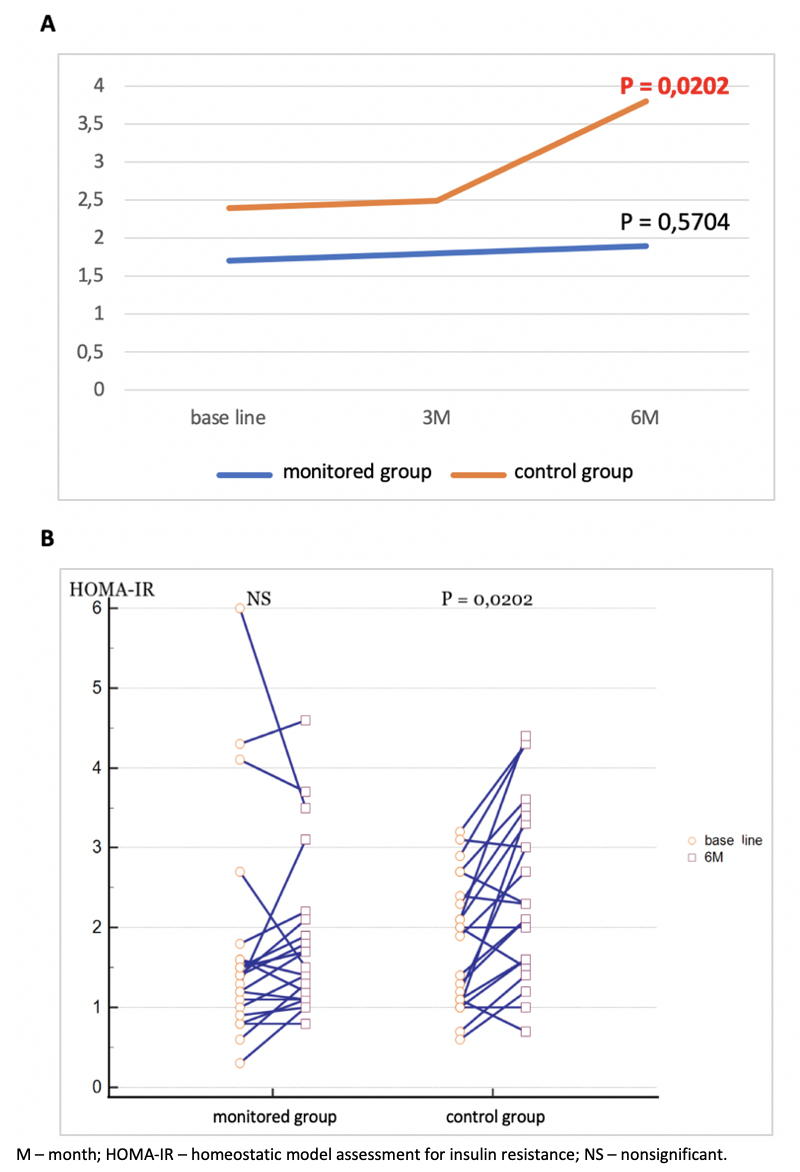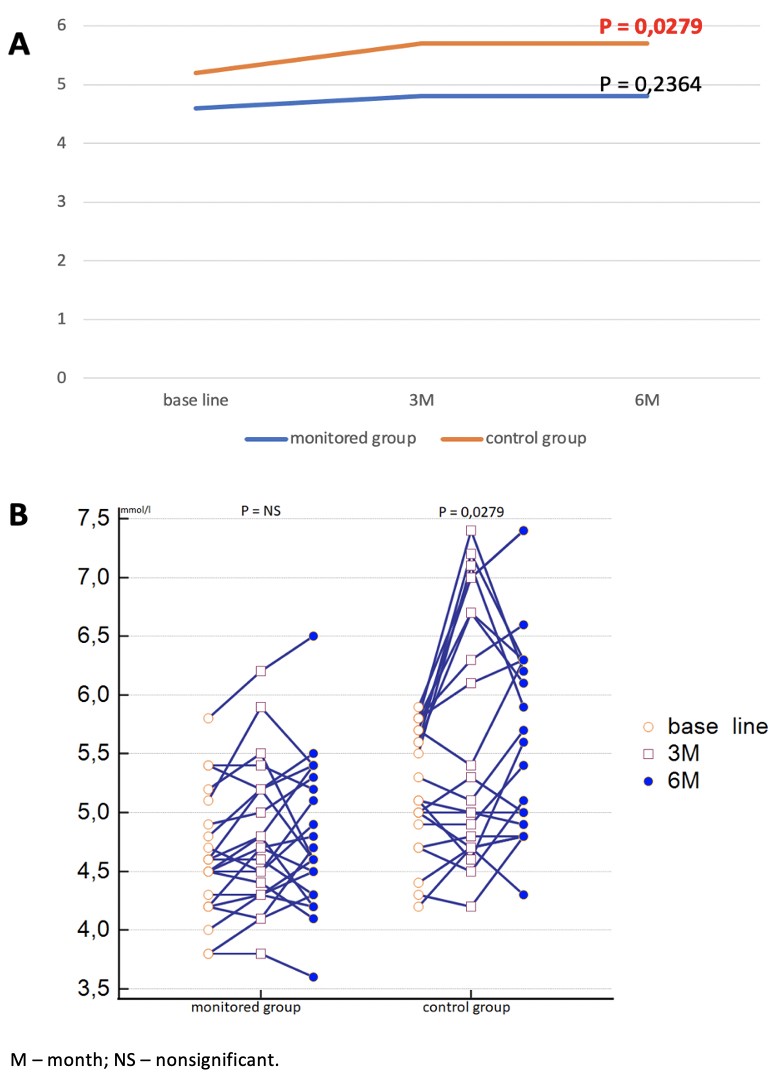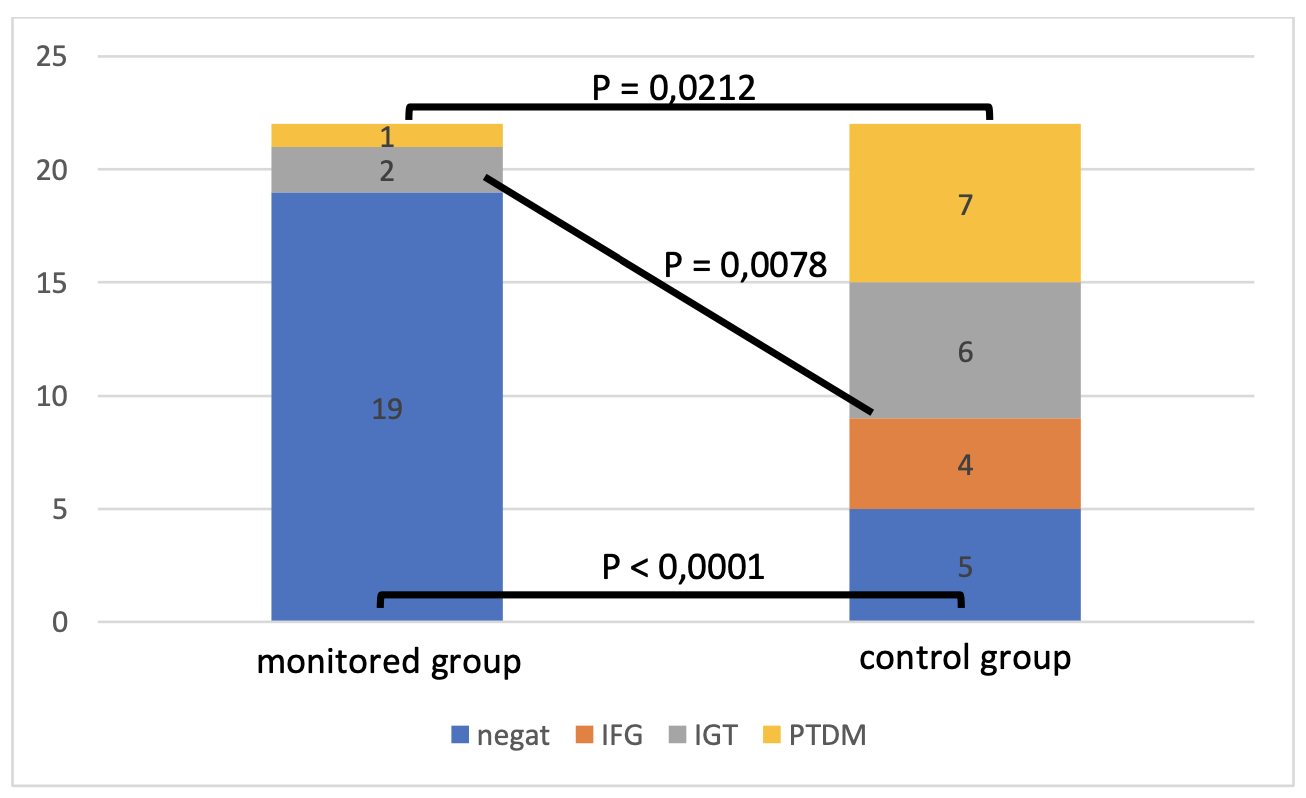Regular physical activity in the prevention of post-transplant diabetes mellitus and associated metabolic conditions in kidney transplant recipients
Karol Graňák1, Matej Vnučák1, Monika Beliančinová1, Margaréta Pytliaková2, Ivana Dedinská1.
1Transplant Center, University hospital Martin, Jessenius Medical Faculty of Comenius University, Martin, Slovakia (Slovak Republic); 2Clinic of Gastrointestinal Internal Medicine, University hospital Martin, Jessenius Medical Faculty of Comenius University, Martin, Slovakia (Slovak Republic)
Introduction: Post-transplant diabetes mellitus (PTDM) is significant risk factor for the survival of graft recipients and occurs in 10-30% of patients after kidney transplant (KT). PTDM is associated with premature cardiovascular morbidity and mortality. Insulin resistance (IR) at the time of KT is the most significant risk factor for the development of PTDM in patients after KT, as demonstrated by several analyzes. It is possible to reduce the high incidence of PTDM and affect the long-term survival of patients and grafts by influencing just modifiable risk factors, including obesity and the associated IR. The aim of this work is to determine the effect of regular physical activity on the development of PTDM and its risk factors in patients after KT.
Methods: This was a prospective controlled analysis, which included 44 patients after primary KT in the Martin Transplant Center. Half consisted of a study group (n = 22) whose patients were assigned to perform regular physical activity. The primary goal was to complete at least 150 minutes of moderate intensity physical exertion per week. They performed an aerobic or combined (aerobic + strength) type of sports activity. Monitoring was provided by a sports tracker (Xiaomi Mi Band 4 compatible with Mi Fit mobile application). The other half was made up of a control group. The exclusion criterion at that time was already diagnosed with diabetes mellitus or a pre-diabetic condition. IR was assessed using the HOMA-IR (Homeostatic Model Assessment for Insulin Resistance) index from fasting blood glucose and insulinemia values. Each patient underwent an oral glucose tolerance test (oGTT) at the end of follow-up. Patients in both groups have the same immunosuppressive protocol. The duration of follow-up was 6 months.
Results: We confirmed a statistically significantly higher IR at 6 months (P = 0.0202) and fasting blood glucose at 3 and 6 months (P = 0.0279) by multivariate analysis in the control group (figure 1, 2). After the end of the follow-up, there were significantly fewer patients with normal oGTT in the control group compared to the study group at 6 months (P < 0.0001), significantly more patients with pre-diabetic condition (impaired plasma glucose, impaired glucose tolerance) (P = 0.0078) and diagnosed with PTDM (P = 0.0212) (figure 3). Significantly lower waist circumference at 3 and 6 months (P = 0.0437, P = 0.0372) and low-density lipoprotein at 6 months (P = 0.0444) were found in the study group compared to the control group. In the study group, the subgroup performing intensive training achieved a significant additional effect on the reduction of waist circumference (P = 0.0173). Patients practicing only aerobic activity achieved significant decrease in triglycerides compared to those practicing combined activity (P = 0.046).
Conclusion: In our study, we confirmed a significant effect of regular physical activity in preventing the development of PTDM and associated pre-diabetic conditions.



right-click to download
